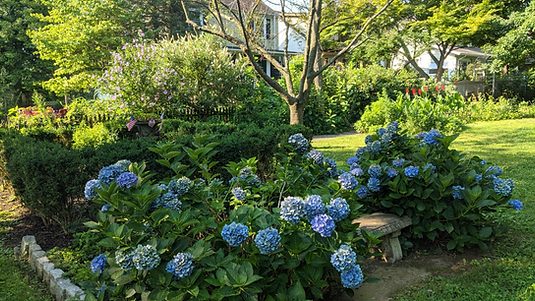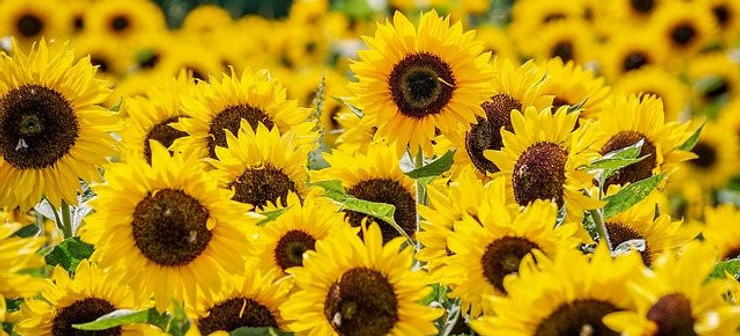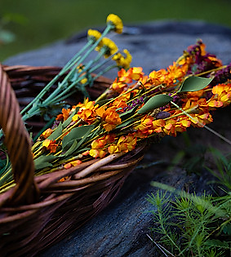
Having fresh cut flowers in my house makes me feel happy. In the winter I tend to go to the local grocery store and collect some from the flower department, but once the buds in my garden start to bloom, I can’t wait to bring some inside.
As a beginner gardener, or even a veteran, you can always use some suggestions for the best cut flowers to grow in your yard. Read on to see the types I would recommend for you. You’ll also find some handy tips along the way!
(Some of the links within this post are affiliate links on which I receive a small compensation from the sale of certain items with no added expense to you.)
(As an Amazon Associate I earn from qualifying purchases.)
Can’t Kill Flowers
If you’re like me, I like to plant the flowers, give them some love, and then let them thrive without too much help. Here is a list of a few flowers that are hardy and difficult to kill.
Phlox
This perennial is easy to grow once it is planted in the spring. It takes full sun and will grow to two to three feet depending on the variety. The tall garden phlox is usually placed at the back of the garden, however be sure not to crowd it. Phlox does well in an area where there is good air circulation to prevent diseases.
The garden Phlox will thrive in well-drained rich soil. They can bloom for at least 6 weeks or more in mid-summer or fall depending on the variety you choose. Garden Phlox come in a variety of colors ranging from white, to pink, red, lavender, purple and orange.
Planting Zones: 4 to 8
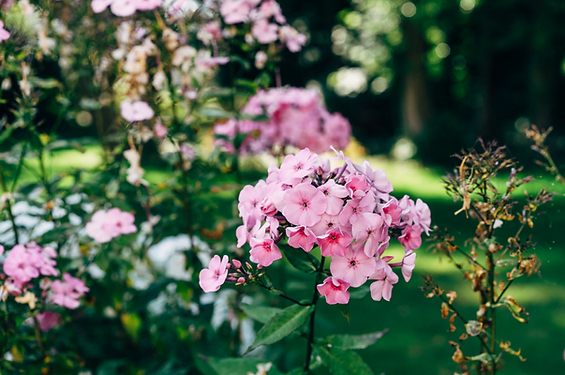
Black Eyed Susan
These favorites are grown in rich, well-drained soil and in full sun. They can be planted in partial shade but they will not have as many blooms as when they are in full sun. Black Eyed Susans bloom from June through September. After they have bloomed, deadhead the flowers to guarantee an abundance of blossoms.
They can grow to 3 feet tall with the stalks over 8 inches long and the flowers between 2 and 3 inches in diameter. This flower has a distinct black eyed center surrounded by yellow petals.
They can be territorial and will block out other flowers. Be sure to plant them where they will not compete with others for nutrients.
Black Eyed Susans are great pollinator plants. They attract butterflies, bees, and other insects that spread the nectar from one plant to the next. For more on plants that attract butterflies, check out “What Flowers Attract Butterflies and Hummingbirds”.
Planting Zones: 3 to 9
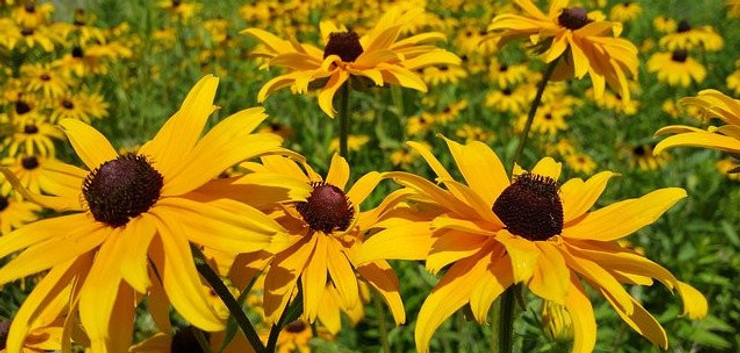
Echinacea (Coneflower)
Coneflower is a popular perennial. It is heat and drought resistant and blooms for months, usually between June through August and even later. Echinacea prefers full sun, at least 6 to 8 hours a day, and can be started by seed in the spring. The seeds will take about 3 to 4 weeks to germinate. They prefer average, well-drained soil.
Coneflowers attract butterflies, songbirds, and bees. Songbirds especially enjoy the seeds the flower produces, so do not cut back the dead vegetation in the fall. Your songbirds will receive a tasty treat and you will be treated to a beautiful serenade when they visit your garden. The plants grow from 2 to 5 feet tall and 1 to 1 and 1/2 feet wide. They come in a variety of colors including pink, orange, yellow, and red.
Planting Zones: 3 – 9
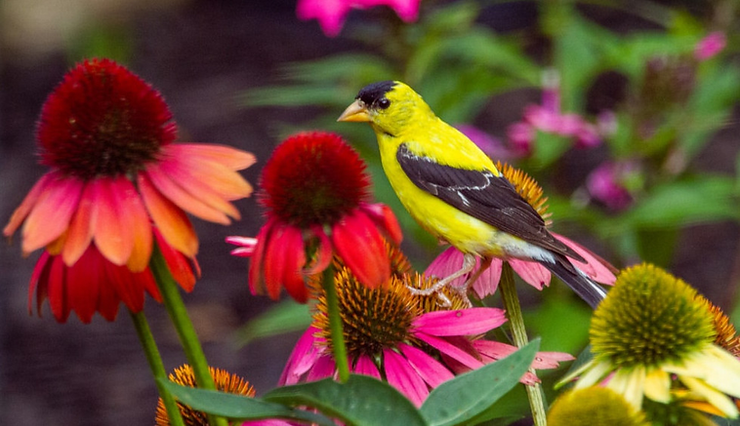
Yarrow
Another flower that attracts butterflies is Yarrow. It comes in a variety of colors including white, yellow, pink, orange, red and purple. It tolerates both heat and drought and can be grown in coastal regions where the soil can be salty. Yarrow is deer and rabbit resistant and grows on long stalks. It enjoys full sun and average, well-drained soil. It can even thrive in clay soil as long as it’s not sitting in standing water. This flower, which has tightly packed clusters on top of of feathery foliage, makes a beautiful cut flower.
Yarrow can be a bit invasive so be careful where you plant it. It can be planted outside after the last frost date for your area. Place your plants 1 to 2 feet apart. Yarrow will grow to about 2 to 4 feet tall.
Growing Zones: 3 to 9
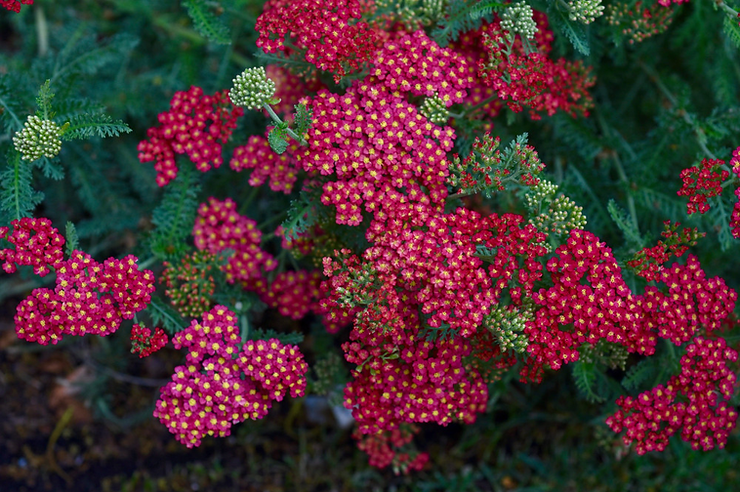
Salvia
Salvia flowers are a wonderful addition to any garden. They do not require much care and are heat and drought tolerant. Provide them with 6 to 8 hours of sunlight and well-drained soil and they will produce colorful spikes of densely packed flowers that are tubular in shape. Because of its shape, it is a great pollinator plant. Hummingbirds, butterflies, and bees love Salvia nectar.
The many varieties of Salvia can grow from 18 inches to 5 feet tall and bloom from summer through autumn. They come in many colors including pink, white, red, blue, yellow, orange, and purple. Some Salvia flowers are also multi-colored.
Be careful when selecting a Salvia plant because not all plants are hardy for all regions. Some Salvias are perennials, but others are grown as annuals, depending on the region.
Salvia has a pungent odor which is disliked by deer and rabbits. It acts as a repellent to these garden pests.
Growing Zones: 4 to 10
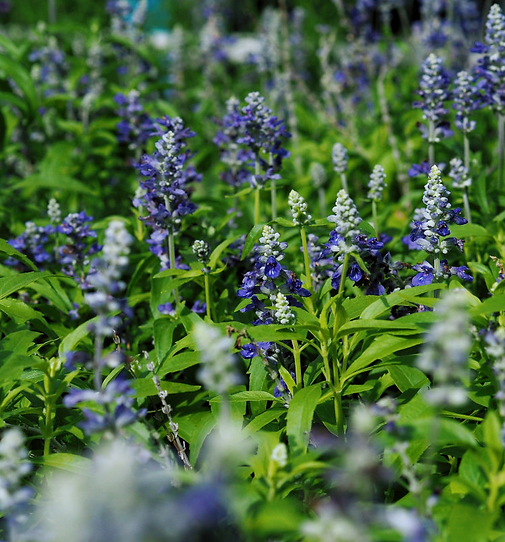
Sunflower
A Sunflower is a fast growing annual plant that can be planted from a seed in the spring after the last threat of frost and when the soil reaches 60 degrees F. Sunflowers love the sun so plant them in an area with at least 6 to 8 hours of full sun.
Sunflowers have long tap roots. They grow best in loose, well-drained, slightly alkaline soil. If you plant the shorter variety in a pot, select a deep pot so the tap root can properly expand to support the flowers.
Sunflowers range in height from one foot to 14 feet tall. They make a wonderful choice for a pollinator garden. The seeds and nectar of Sunflowers are loved by birds and bees.
Their happy faces bend toward the sun during the course of the day, as if they are hoping to get a nice suntan.
Growing Zone: 2 to 11
When and How to Cut Blossoms
Early morning is the best time to cut flowers, after they’ve had a night’s rest, are covered with dew, and are plump with water and carbohydrates. As the day progresses the plants become dehydrated.
Use sharp, clean scissors and/or clippers and cut them diagonally on the stem. I like to place them immediately in a fresh bucket of water while I’m gathering more blossoms from the garden.
Taking Care of Fresh Cut Flowers
Water in Vase
Once you have collected the blossoms, prepare the water (room temperature) in the vase. This step could also be done before clipping the flowers. Here are a few ways to preserve your cut flowers.
1. To inhibit bacteria growth and cloudy water in the vase, add 1/4 teaspoon of bleach to a quart (1 liter) of water.
2. As an alternative, mix 3 drops of bleach with 1 teaspoon of sugar in a quart (1 liter) of water.
3. Pour a quarter of a cup of clear soda, such as Sprite, into a vase full of water. The sugar in the soda will make the blooms last longer.
4. Mix 2 tablespoons of apple cider vinegar and 2 tablespoons of sugar in the vase water, then add the flowers.
5. Put a crushed aspirin in the vase water.
6. Add a copper penny and a cube of sugar into the water. The copper adds acid to the water which helps prevent bacteria from growing.
Cut the Stems; Remove Foliage
Before you place your flowers in the vase, remove the lower leaves from the stems so none are submerged in the water.
Each time you change the water, recut the stem on an angle, clean the stems under running water to remove that slimy gunk on the stem, and remove any more foliage that may be submerged in the water.
Change Water
Change the water every 3rd or 4th day. Be sure to add the ingredients from the list above to the water before adding the freshly cut flowers.
An Alternative to Cut Flowers
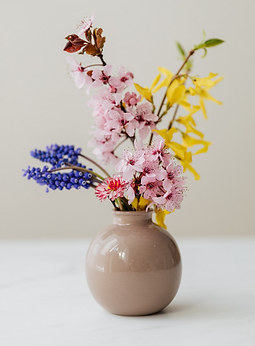
If you cannot wait for cut flowers to bloom in your garden, why not cut some limbs of flowering trees or flowering bushes that bloom in the spring? To make the vase seem more full, cut sprigs of evergreens and place them in your bouquet.
Take sharp, clean clippers and cut a few stems to bring in and place on a hearth, in the corner of a room, on a coffee table, or on a mantle or side board.
Use a tall, sturdy vase and fill it with just a few inches of water. You can add one of the solutions suggested above to preserve the flowers on the stems.
In a week or two you will have a beautiful spring bouquet.
Best Cut Flowers to Grow in Your Garden
It’s time to build your own cut flower garden and stop spending money on store bought flowers. There’s nothing like the feeling of knowing you cultivated the components of your beautiful arrangement. I know you will be thrilled with your harvest and will enjoy displaying them in your home or sharing them with a neighbor or friend.
I hope you learned a thing or two about the different varieties of cut flowers and how to grow and care for them. Please comment below and let me know how you made out if you decide to plant some of these beauties. Also, please share this post and my website with other garden lovers!
Happy Gardening,
Nina

